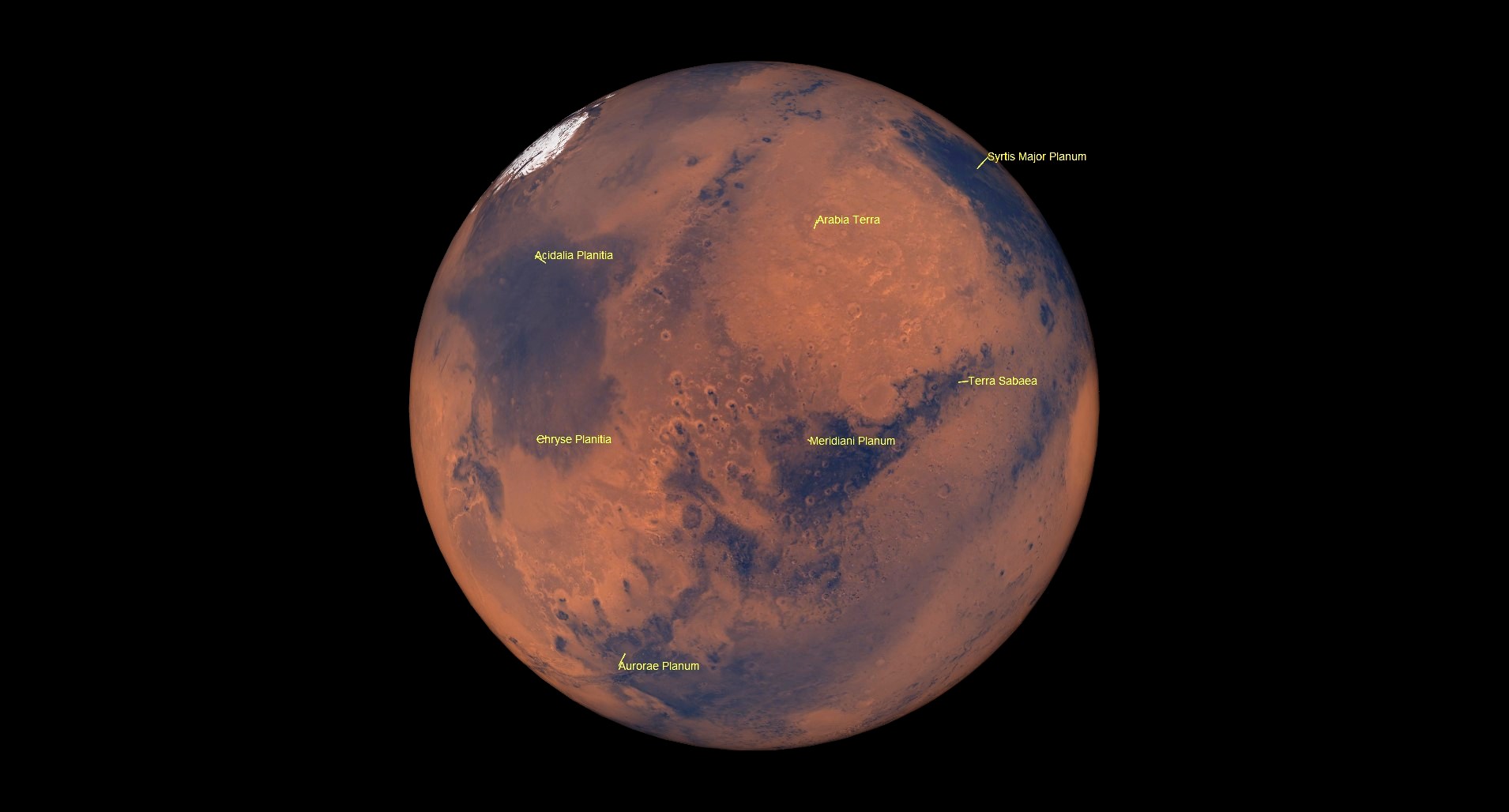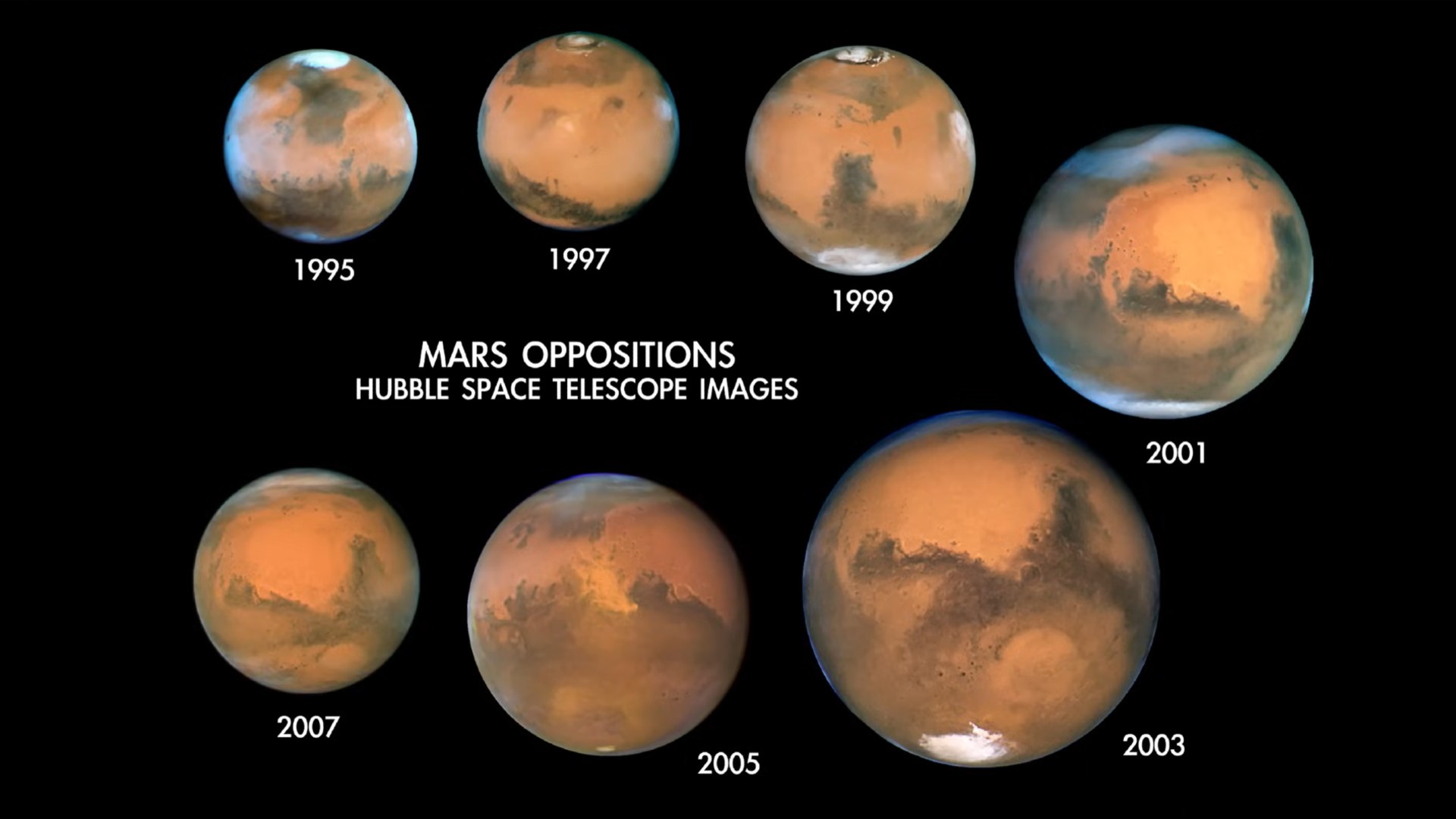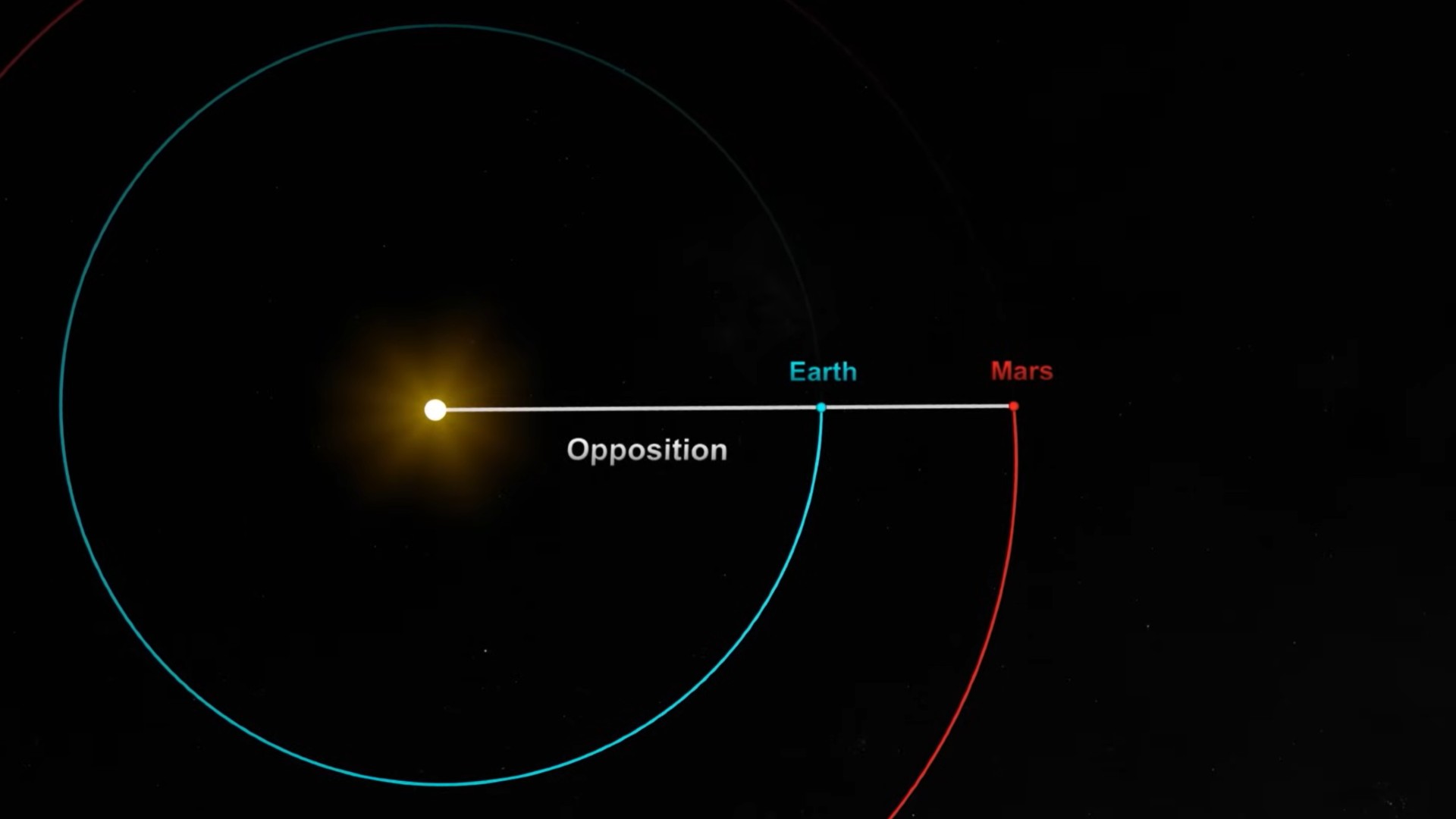Mars will make its closest approach to Earth this weekend while rising to its highest point in the night sky.
On Sunday (Jan. 12), the Red Planet will make its close approach of Earth at 8:32 a.m. EST (13:32 GMT). This event, known as perigee, causes Mars to appear bigger and brighter in the sky than usual, offering skywatchers an excellent viewing opportunity, according to In-the-Sky.org.
Mars will be visible from New York City beginning around 5:43 p.m. EST (2243 GMT), when it reaches an altitude of 7 degrees above the horizon to the northeast. The Red Planet will reach its highest point, 74 degrees above the southern horizon, at 12:29 a.m. EST (0529 GMT) on Monday (Jan. 13) and remain visible for most of the night before disappearing in the light of dawn at around 6:58 a.m. EST (1158 GMT), as it moves to 14 degrees above the northwest horizon.
During this close approach, Mars will pass within 0.64 astronautical units (AU) of Earth while in the constellation Cancer. One AU equals the average distance between Earth and the sun, around 93 million miles (around 150 million kilometers).
Mars orbits the sun at an average distance of 1.5 AU, and at its apogee (its farthest distance from Earth) reaches a distance of 2.6 AU.
This weekend’s perigee will bring Mars the closest it has been to Earth since 2022, when it passed within 0.54 astronautical unit (AU) of our planet.
Mars’ close approach of Earth also coincides with its opposition on Jan. 16, when the Red Planet is located almost exactly opposite the sun in the sky with Earth in the middle.
These two events — perigee and opposition — typically occur a few days apart based on the orbits of the two planets.
During opposition, the sun’s full glare illuminates the planet’s surface as seen from Earth, making it easier to observe by both amateur astronomers using backyard telescopes and professional astronomers using space-based telescopes.
During the perigee, Mars will have a maximum magnitude of -1.4, appearing bright in our night sky (lower and/or negative numbers indicate brighter objects in the sky). Although Mars will appear bigger and brighter during its close approach, it will still only appear as a star-like point of light with the naked eye. A pair of binoculars or a telescope will be needed to reveal details of the planet.
If you’re looking for binoculars or a telescope to observe Mars, our guides for the best binoculars and the best telescopes have options that can help. Be sure to also check out our guides for tips on how to photograph the planets ahead of Mars’ close approach.
Editor’s Note: If you snap a good photo of Mars and would like to share it with Space.com’s readers, send your photo(s), comments, and your name and location to spacephotos@space.com.







